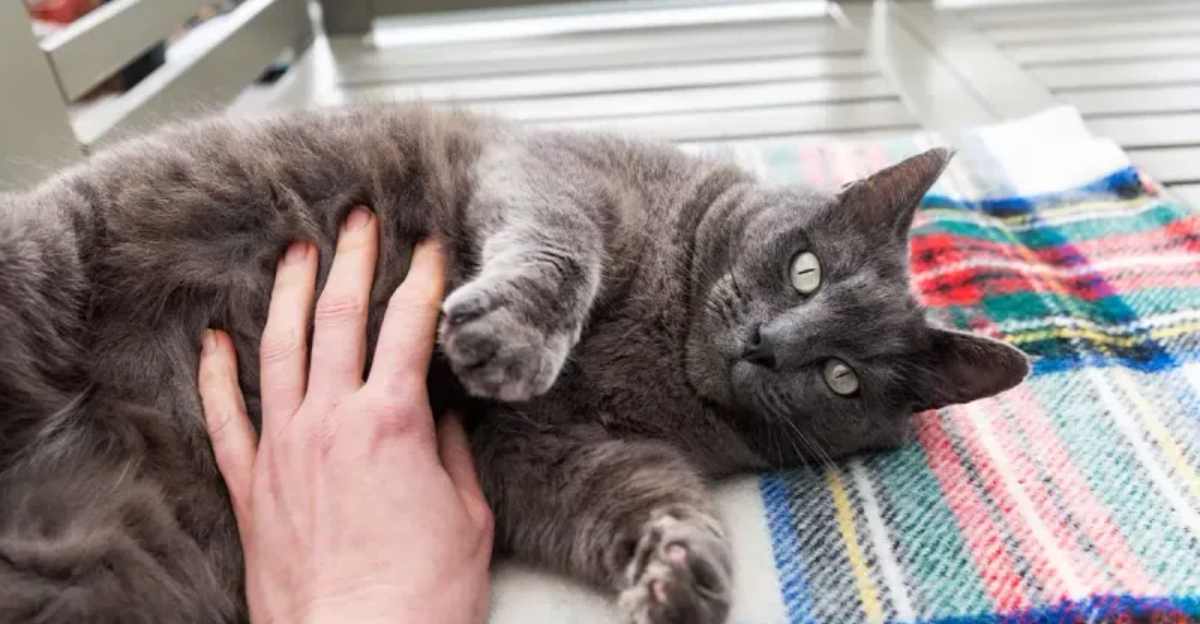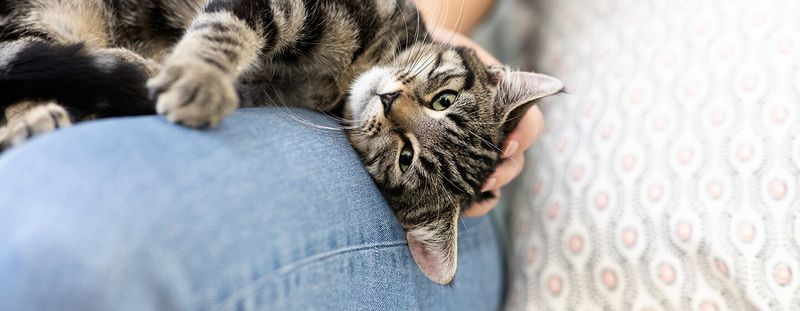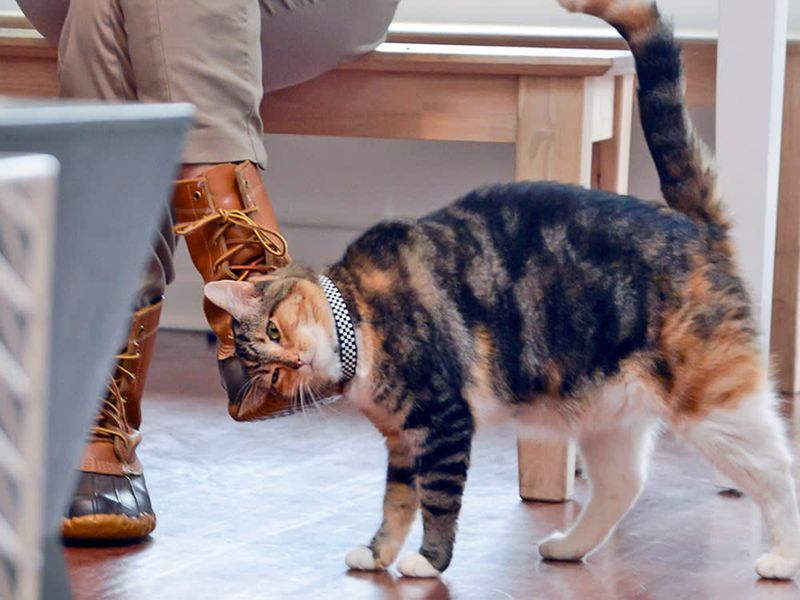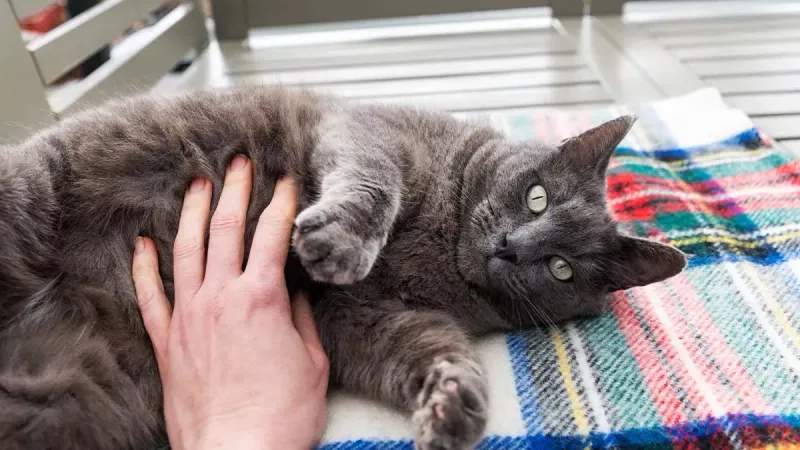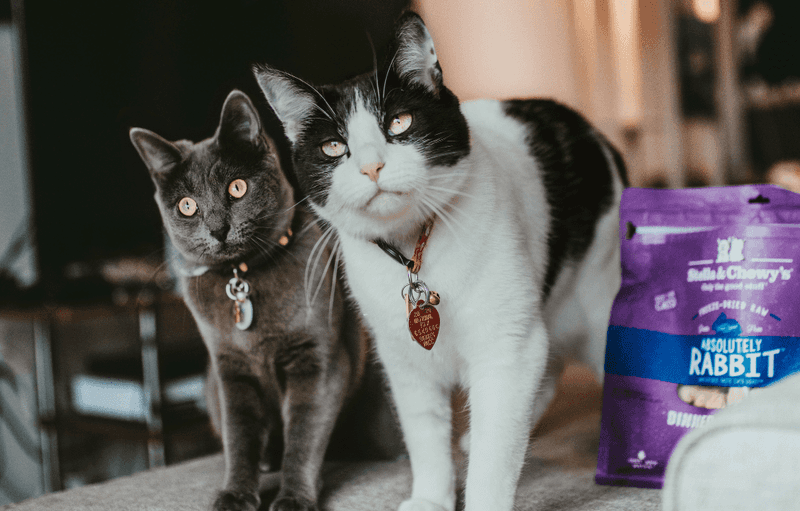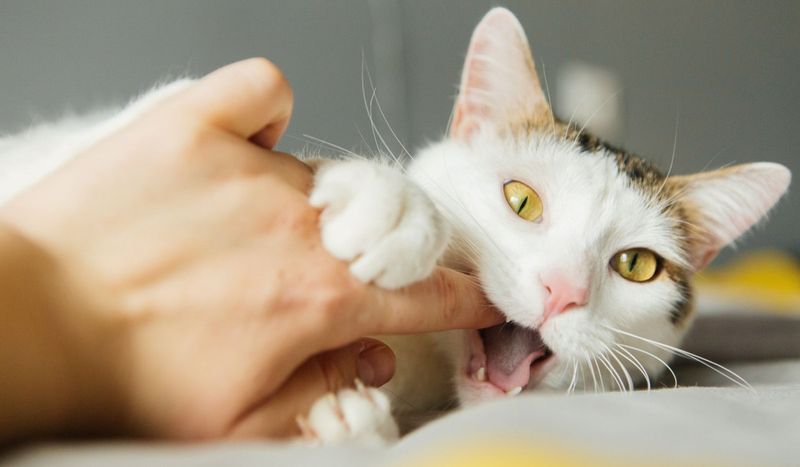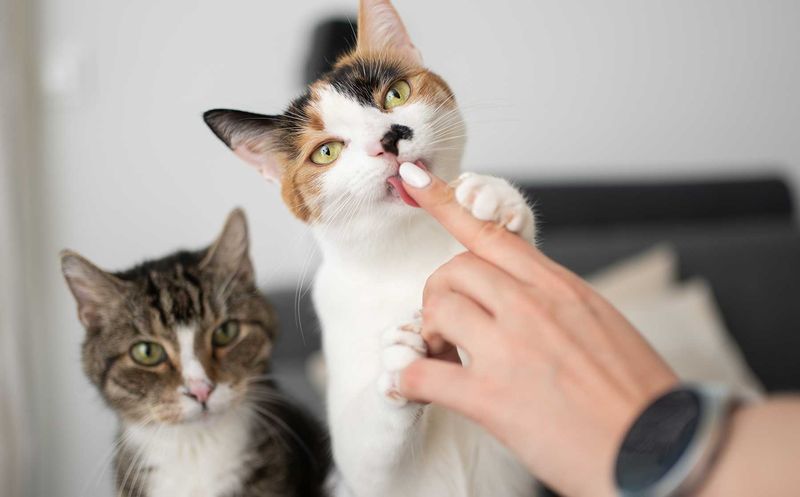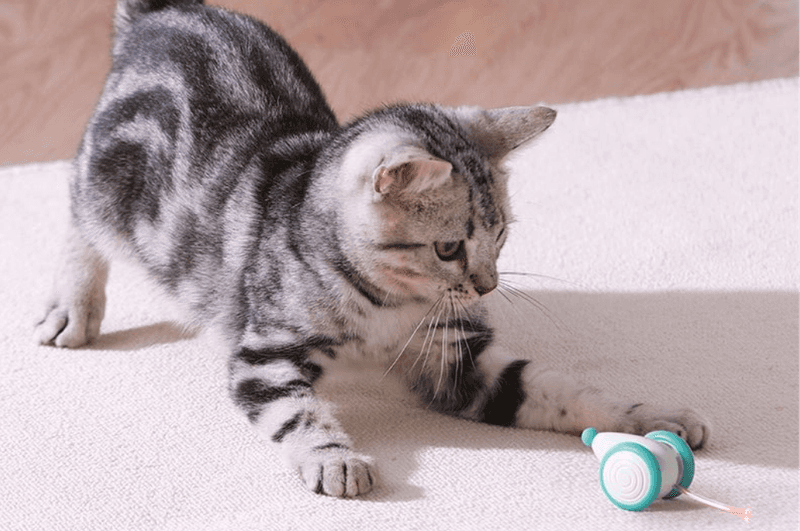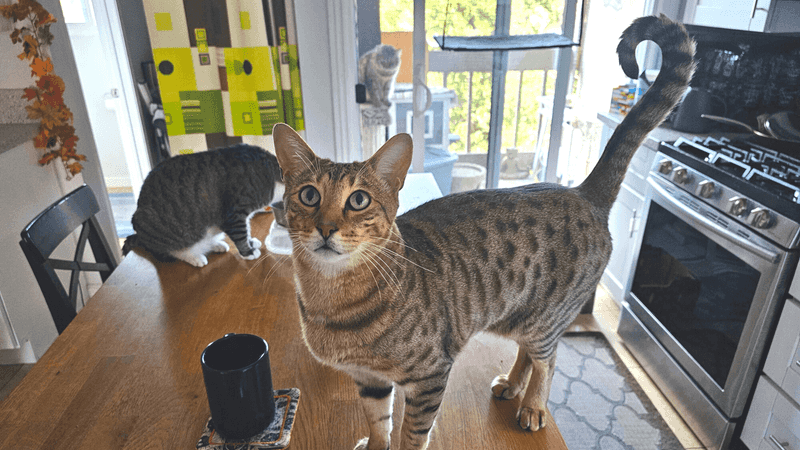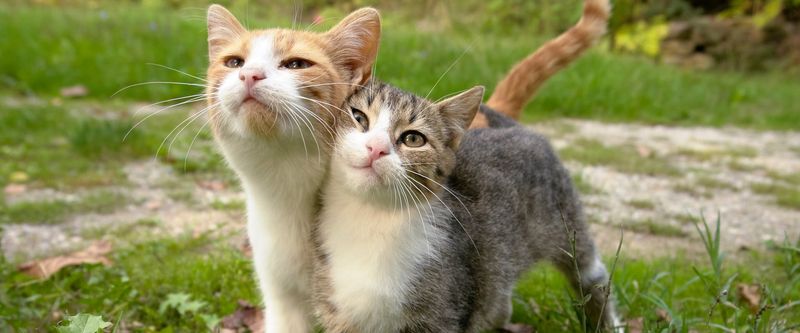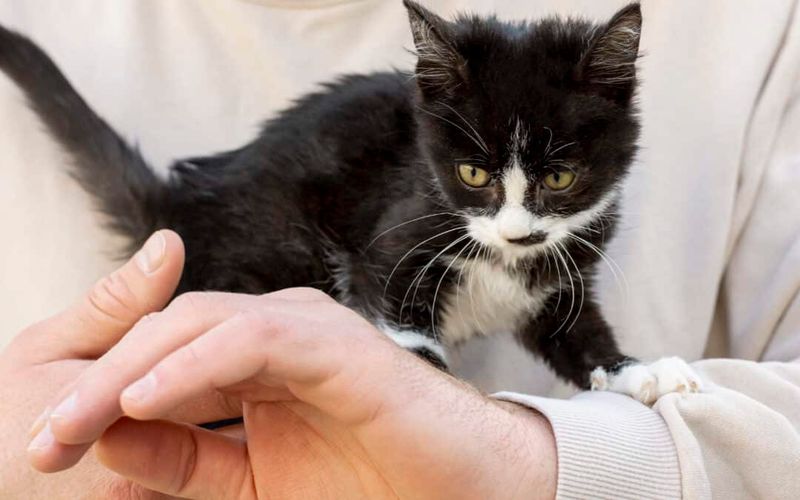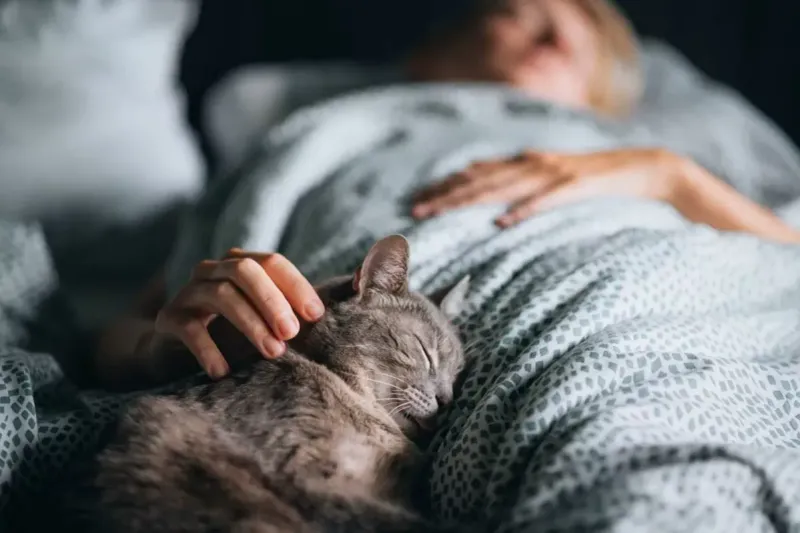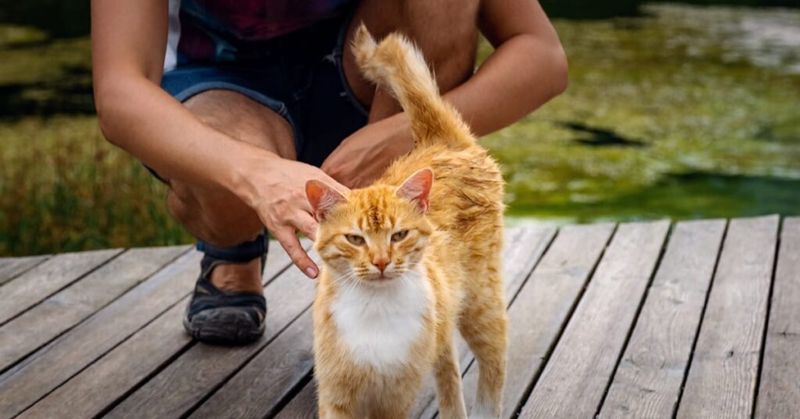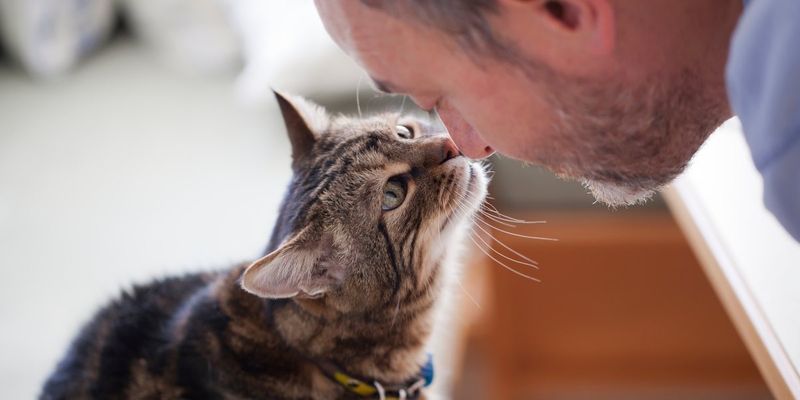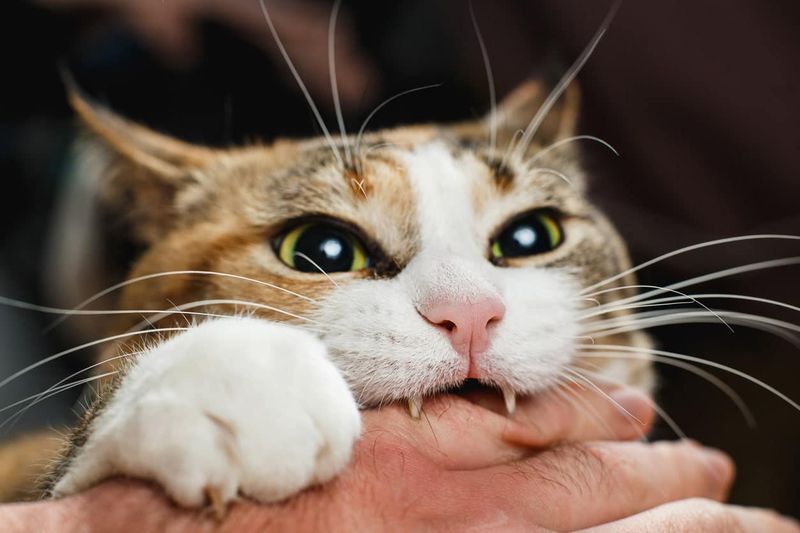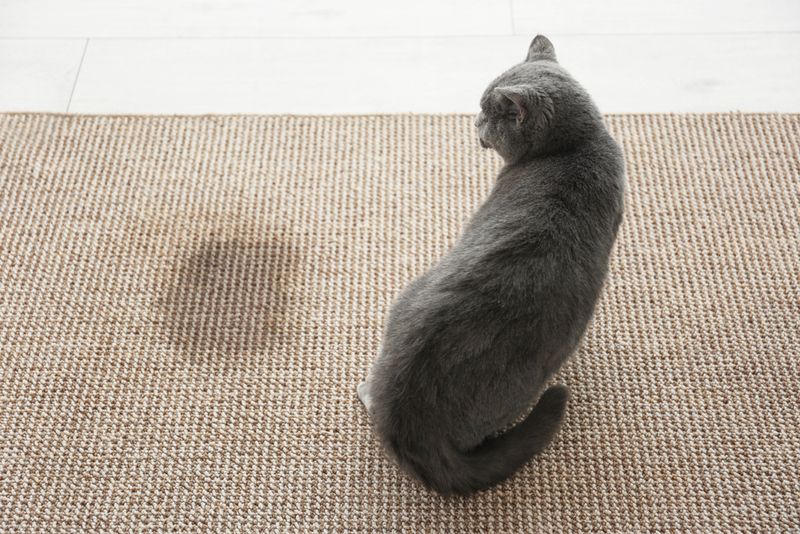📖 Table of Content:
- 1. Slow Blinks of Trust
- 2. Bringing You ‘Gifts’
- 3. Kneading Your Lap
- 4. Head Butting and Cheek Rubbing
- 5. Exposing Their Belly to You
- 6. Following You Everywhere
- 7. Purring in Your Presence
- 8. Greeting You at the Door
- 9. Gentle Love Bites
- 10. Grooming You
- 11. Showing You Their Toys
- 12. Tail Positions of Happiness
- 13. Chirps and Trills Just for You
- 14. Making Biscuits on You
- 15. Respecting Your Personal Space
- 16. Seeking You When Scared
- 17. Synchronized Sleeping Schedules
- 18. Sharing Their Favorite Spots
- 19. Responding to Your Voice
- 20. Relaxed Body Language Around You
- 1. Aggression Toward Strangers
- 2. Excessive Grooming or Hair Loss
- 3. Inappropriate Elimination
- 4. Complete Withdrawal or Hiding
- 5. Sudden Aggression or Fear
Cats are enigmatic animals known for their subtle and often misunderstood ways of expressing affection. Their quiet gestures and nuanced behaviors can carry deep emotional meaning. Unlike more overtly expressive pets, cats reveal their bonds in quiet, intricate ways.
While their signals may seem small, they can speak volumes about trust and attachment. A slow blink, a gentle head bump, or simply choosing to nap nearby can be powerful signs of connection. Recognizing these behaviors fosters mutual understanding and emotional closeness.
At the same time, changes in behavior can signal discomfort, stress, or unmet needs. Some actions may appear affectionate but could point to underlying issues. Paying attention to both positive and concerning cues is essential for a happy, healthy relationship.
1. Slow Blinks of Trust
Feline experts call it the ‘cat kiss.’ When your cat looks at you with relaxed eyes and delivers those slow, deliberate blinks, they’re essentially blowing you kisses in cat language. This gesture indicates complete trust and contentment in your presence.
The slow blink means your cat feels safe enough to temporarily close their eyes around you – a vulnerable position they wouldn’t risk with someone they didn’t trust. Try reciprocating with your own slow blinks and watch how your cat responds. This non-verbal communication builds a deeper bond between you and your feline friend, creating a special language only the two of you share.
2. Bringing You ‘Gifts’
Finding a dead mouse or mangled toy on your doorstep might seem gross, but it’s actually a compliment of the highest order. Cats are natural hunters who teach their young how to survive by bringing them prey. When they bring you these ‘presents,’ they’re treating you as family they want to care for.
Your cat views you as someone who needs hunting lessons or deserves the spoils of their successful hunt. While not the most pleasant way to show love, this behavior demonstrates your cat considers you part of their inner circle. Female cats are especially prone to this behavior, but males do it too.
3. Kneading Your Lap
That rhythmic pushing of paws against your lap or stomach has deep roots in your cat’s kittenhood. Kittens knead their mother’s belly to stimulate milk flow while nursing. When adult cats continue this behavior with you, they’re expressing contentment and a parent-child bond.
Cats only knead on surfaces and people they feel completely comfortable with. The happier they are, the more intense the kneading tends to be. Some cats even drool while kneading, further evidence they’re experiencing kitten-like comfort. Despite the occasional discomfort from their claws, this behavior is one of the strongest signs your cat has accepted you as family.
4. Head Butting and Cheek Rubbing
When your cat bumps their head against you or rubs their cheeks on your legs, they’re not just being affectionate – they’re marking you as their territory. Cats have scent glands on their cheeks, chins, and foreheads that release pheromones when rubbed against objects – or people they care about.
This behavior, called bunting, transfers their scent onto you, effectively saying to other cats, ‘This human belongs to me.’ It’s a clear sign your cat has claimed you as part of their family group. The stronger the head butt or more persistent the rubbing, the more confident your cat feels about their relationship with you.
5. Exposing Their Belly to You
A cat’s belly is their most vulnerable area, containing vital organs with little protection. When your feline friend rolls over and shows you their tummy, they’re demonstrating complete trust in you. This position leaves them defenseless, something cats only do when they feel absolutely secure.
However, this gesture can be confusing. While it shows trust, it’s not always an invitation for belly rubs. Some cats enjoy stomach scratches, but many will react defensively if you touch this sensitive area. The belly exposure itself, regardless of whether touching is welcome, represents one of the highest compliments your cat can give you.
6. Following You Everywhere
Cats aren’t typically known for their clingy behavior, so when your furry friend follows you from room to room like a shadow, it’s a strong sign of attachment. This behavior indicates they enjoy your company and want to be part of whatever you’re doing.
Bathroom trips, kitchen duties, or just walking around the house – a cat that trails behind you is showing they consider you an important part of their world. They’re choosing your presence over solitude or other activities. Some cats even develop routines around their humans’ schedules, waiting by the door before you arrive home or following specific daily patterns alongside you.
7. Purring in Your Presence
The soothing rumble of a cat’s purr typically signals contentment and relaxation. When your cat curls up beside you and starts this motor-like sound, they’re expressing comfort and happiness in your company. Kittens learn to purr within days of birth as a way to communicate with their mothers. Adult cats continue this behavior with humans they consider family.
While purring can occasionally indicate stress or pain, context matters. A cat purring while relaxed on your lap is clearly showing affection and trust. The therapeutic vibrations of purring (between 25 and 150 Hz) actually promote healing and reduce stress – benefits your cat is sharing with you.
8. Greeting You at the Door
When your cat runs to the door when you come home, tail held high with a slight curve at the tip, they’re displaying classic greeting behavior reserved for those they consider family. This “welcome home” ritual shows they’ve been waiting for your return and are genuinely happy to see you.
The upright tail position specifically indicates excitement and positive emotions in feline body language. Some cats will combine this greeting with vocalizations, rubbing against your legs, or leading you further into the house. Even independent cats who seem aloof at other times often engage in this behavior with their favorite humans, making it especially meaningful when observed.
9. Gentle Love Bites
Small, gentle nips that don’t break skin are often called “love bites” and represent a form of affectionate communication between cats and their chosen humans. These differ significantly from aggressive bites and typically occur during petting sessions when your cat is feeling particularly bonded. Cats use these gentle bites with their littermates and mothers as kittens.
When directed at you, they indicate your cat sees you as family. The behavior stems from kittenhood grooming sessions where slight nipping was part of the social bonding process. While sometimes startling, these nibbles should be recognized as the compliment they are – your cat is treating you as they would a trusted feline companion.
10. Grooming You
Licking of a human’s skin or hair by a cat is classified as allogrooming, a social behavior commonly observed among bonded felines. Within colonies, cats engage in mutual grooming to reinforce social structure and emotional ties. When directed at humans, it suggests the cat perceives the person as part of its inner circle.
Your cat’s rough tongue might feel strange against your skin, but this behavior is a profound compliment. They’re essentially treating you as another cat they care for deeply. This grooming also serves to mix scents, further cementing your place in their family group. Some cats will even try to groom their humans’ hair, mimicking how mother cats clean their kittens. This behavior represents one of the clearest signs your cat has fully accepted you.
11. Showing You Their Toys
Cats who bring their favorite toys to you are demonstrating remarkable trust and inclusion. This behavior shows they want to share their playtime with you and consider you a worthy playmate. Unlike the hunting “gifts” of prey, toy-sharing is purely social. Your feline friend might drop the toy at your feet, chirp or meow to get your attention, or engage in play nearby to invite participation.
This interactive behavior indicates they view you as a source of fun and companionship, not just a provider of food and shelter. Responding to these invitations by engaging in play further strengthens your bond and reinforces their view of you as family.
12. Tail Positions of Happiness
Cat tails are incredibly expressive, serving as emotional barometers. When your cat approaches with their tail held high with a slight quiver or curve at the tip, they’re displaying excitement and affection specifically for you. This “question mark” tail is reserved for greeting beloved family members. A gently swaying tail (different from the agitated thumping when annoyed) indicates contentment in your presence.
Some cats will even wrap their tail around your leg or arm – the feline equivalent of holding hands. Learning to read these tail signals helps you understand when your cat is expressing that special bond they feel with you versus their general mood or attitude toward others.
13. Chirps and Trills Just for You
The adorable chirping or trilling sounds some cats make are special vocalizations often reserved for those they consider family. Mother cats use these sounds to communicate with their kittens, and when directed at you, they indicate a similar nurturing relationship.
Unlike standard meows (which cats primarily use for human communication) or hisses (for threats), these bird-like chirps and musical trills are typically used between cats who share close bonds. When your cat uses this special “vocabulary” with you, they’re communicating in a more intimate feline language. These sounds often accompany greetings or attempts to get you to follow them somewhere, further emphasizing their desire for interaction.
14. Making Biscuits on You
The rhythmic kneading motion cats make with their front paws – often called “making biscuits” – is a behavior that begins in kittenhood to stimulate milk flow while nursing. When your adult cat performs this motion on your lap, blanket, or even your stomach, they’re displaying deep contentment and security. This regression to kittenhood behavior shows your cat associates you with the comfort and safety they felt with their mother.
It’s one of the most endearing ways cats show they’ve accepted you as family. The intensity of kneading often correlates with how relaxed and happy your cat feels in your presence, making it a beautiful sign of trust.
15. Respecting Your Personal Space
Counterintuitively, a cat that respects your personal boundaries while maintaining proximity shows a sophisticated level of bonding. These cats will sit nearby without demanding attention, creating a comfortable co-existence that mirrors natural feline colony behavior. This respectful distance demonstrates your cat understands your needs and preferences while still choosing to be in your presence.
They might position themselves where they can observe you without being intrusive, showing both independence and attachment. The balance between togetherness and autonomy indicates a mature, healthy relationship where your cat sees you as an equal family member rather than just a provider or subordinate.
16. Seeking You When Scared
During thunderstorms, fireworks, or unfamiliar situations, a cat that runs to you for protection is displaying profound trust. Unlike dogs, who naturally seek human protection, cats typically hide alone when frightened – their instinct is to isolate themselves in small, secure spaces.
A scared cat choosing your presence over a hiding spot is overriding their natural instincts because they believe you provide greater security. This behavior demonstrates they view you as a protector and safe haven during times of stress. Even typically independent cats will seek out their chosen humans during frightening situations if they truly consider them family, making this behavior especially significant when observed.
17. Synchronized Sleeping Schedules
By nature, cats are most active during early morning and evening hours. When a cat starts following your daily rhythm—resting when you do and waking when you do—it’s a clear sign of connection. They’re adjusting their instincts to be close to you.
This adjustment of natural rhythms shows your cat prioritizes time with you over their instinctual schedule. They may still have their crazy midnight zoomies occasionally, but a cat that generally aligns with your routine is making a significant social accommodation. This synchronization is similar to how cats in the same colony will often coordinate their activities, further evidence your cat sees you as part of their family group.
18. Sharing Their Favorite Spots
That cozy windowsill or lofty perch isn’t just a favorite lounging spot—it’s prime feline real estate. If your cat lets you sit nearby or curls up next to you there, consider it a special invitation. You’ve officially been welcomed into their inner circle.
Some cats will even scoot over to make room or pat the space beside them as an invitation for you to join. The willingness to share premium real estate is especially meaningful from cats who are otherwise possessive about their space, showing they’ve elevated you from guest to family member in their home.
19. Responding to Your Voice
A cat that recognizes and responds to your voice, even when they can’t see you, has formed a special bond with you. Studies show cats can distinguish their owner’s voice from strangers but typically only respond when they want to – classic cat independence! When your cat consistently acknowledges your voice with ear movements, vocalizations, or by coming to you when called, they’re showing they value communication with you.
This selective responsiveness indicates they’ve categorized you as someone worth paying attention to. Some bonded cats even develop different responses to different tones or phrases from their chosen humans, creating a primitive but meaningful shared language.
20. Relaxed Body Language Around You
Feline body language reveals volumes about how they perceive their environment. A cat that displays consistently relaxed postures around you – loose limbs, half-closed eyes, exposed belly, or stretched-out sleeping positions – is demonstrating complete comfort in your presence.
Contrast this with the tense, alert postures cats adopt around strangers or threats. The willingness to be physically vulnerable shows your cat categorizes you as safe and trustworthy, a status reserved for family members. Even subtle signs like slow blinking, relaxed whiskers pointing forward instead of flat against the face, or a loosely curled tail indicate your cat feels secure enough with you to let their guard down completely.
1. Aggression Toward Strangers
While not ideal behavior, a cat that becomes protective or territorial when strangers approach you is displaying a form of family defense. This reaction stems from their perception of you as someone who belongs to their social group and deserves protection.
Cats may position themselves between you and visitors, growl when someone gets too close, or even swat at people who try to touch you. Though problematic and requiring gentle correction, this behavior has roots in genuine attachment. This protective response mirrors how mother cats defend their kittens from perceived threats, indicating your cat has placed you in a similar category of importance in their social hierarchy.
2. Excessive Grooming or Hair Loss
Grooming is a normal and healthy behavior for cats, but excessive licking that causes bald spots or skin damage is a red flag. This kind of over-grooming is often linked to stress, anxiety, or health problems. It’s important to consult a veterinarian, as it may point to pain, allergies, or emotional strain.
The most common locations for stress-related over-grooming include the belly, inner thighs, and forearms – areas easily reached during anxious episodes. A cat that has chosen you as family may display this behavior when experiencing separation anxiety or sensing tension in the household, showing their emotional dependence on you.
3. Inappropriate Elimination
When a previously litter-trained cat begins urinating or defecating outside the box, it often signals either medical issues or significant emotional distress. This behavior requires attention rather than punishment, as cats don’t eliminate inappropriately out of spite.
Medical causes include urinary tract infections, kidney disease, or digestive problems. Psychological triggers might be stress from household changes, conflicts with other pets, or anxiety about their relationship with you. A cat that has bonded with you might actually target your personal items like clothing or bedding when stressed – not as revenge, but because these items carry your comforting scent and feel safer than other locations.
4. Complete Withdrawal or Hiding
Even the most independent cats usually stay loosely connected to their people. If a bonded cat suddenly disappears for days into closets or under furniture, it’s more than a need for alone time. This type of behavior often points to emotional distress or physical illness that shouldn’t be ignored.
Extended isolation, especially when accompanied by reduced eating or grooming, suggests something is seriously wrong. This behavior is particularly significant in cats who previously sought your company regularly. The contrast between their normal, affectionate behavior and new avoidance patterns serves as an important warning sign that your feline family member needs help.
5. Sudden Aggression or Fear
A previously affectionate cat that suddenly hisses, swats, or runs from you could be experiencing pain or illness. Cats instinctively hide weakness, so aggression often serves as a warning to stay away from tender areas that hurt when touched. This behavioral change requires immediate veterinary attention as it frequently indicates medical problems like arthritis, dental pain, or internal injuries.
The transformation can be dramatic – a lap cat suddenly becoming untouchable or a friendly feline hiding under furniture when approached. While concerning, this behavior actually demonstrates trust; your cat expects you to recognize something is wrong and help them, rather than simply avoiding you entirely.
